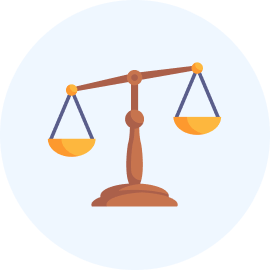CLAT Exam > CLAT Videos > Crash Course for CLAT > Syllogism: Fundamentals
Syllogism: Fundamentals Video Lecture | Crash Course for CLAT
|
226 videos
|
FAQs on Syllogism: Fundamentals Video Lecture - Crash Course for CLAT
| 1. What is a syllogism and why is it important in the CLAT exam? |  |
Ans. A syllogism is a logical argument consisting of two premises and a conclusion, based on deductive reasoning. It is important in the CLAT exam as it tests the candidate's ability to analyze and evaluate arguments, which is a crucial skill for legal reasoning.
| 2. How can I improve my syllogism solving skills for the CLAT exam? |  |
Ans. To improve your syllogism solving skills for the CLAT exam, you can practice solving a variety of syllogism questions from previous year papers and mock tests. Familiarize yourself with different types of syllogism patterns, such as categorical, hypothetical, and disjunctive syllogisms. Additionally, learn the rules and techniques for solving syllogism questions, such as the Venn diagram method.
| 3. Are there any common mistakes to avoid while solving syllogism questions in the CLAT exam? |  |
Ans. Yes, there are common mistakes to avoid while solving syllogism questions in the CLAT exam. Some of these include:
1. Mistaking the converse: Be cautious not to interchange the subject and predicate terms while forming the conclusion.
2. Ignoring the middle term: Pay attention to the middle term in the premises, as it plays a vital role in forming the conclusion.
3. Not considering the possibility of multiple conclusions: Sometimes, a syllogism may have more than one valid conclusion, so be open to considering alternative conclusions.
4. Misinterpreting negative statements: Negative statements can often confuse the solver, so be careful in understanding the negation of terms and statements.
| 4. What are some effective strategies to quickly solve syllogism questions in the CLAT exam? |  |
Ans. Here are some effective strategies to quickly solve syllogism questions in the CLAT exam:
1. Use Venn diagrams: Drawing Venn diagrams can help visualize the relationships between different terms and quickly identify the valid conclusions.
2. Analyze the premises: Carefully analyze the given premises to identify any direct or indirect relationships between the terms.
3. Apply the rules of syllogism: Learn and apply the rules of syllogism, such as the conversion, obversion, and contraposition rules, to derive valid conclusions.
4. Use elimination method: If the given options are provided, eliminate the ones that do not match the conclusions derived from the premises.
5. Practice regularly: Regular practice of different types of syllogism questions will help you become faster and more accurate in solving them.
| 5. Can you provide an example of a syllogism question that may appear in the CLAT exam? |  |
Ans. Sure! Here's an example:
Premise 1: All cats are animals.
Premise 2: Some animals are dogs.
Conclusion:
A. Some dogs are cats.
B. All cats are dogs.
C. Some cats are not dogs.
D. All animals are dogs.
Correct answer: A. Some dogs are cats.
In this example, by combining the two premises, we can conclude that there is a possibility of some dogs being cats.
|
226 videos
|

|
Explore Courses for CLAT exam
|

|
Signup for Free!
Signup to see your scores go up within 7 days! Learn & Practice with 1000+ FREE Notes, Videos & Tests.
Related Searches

















